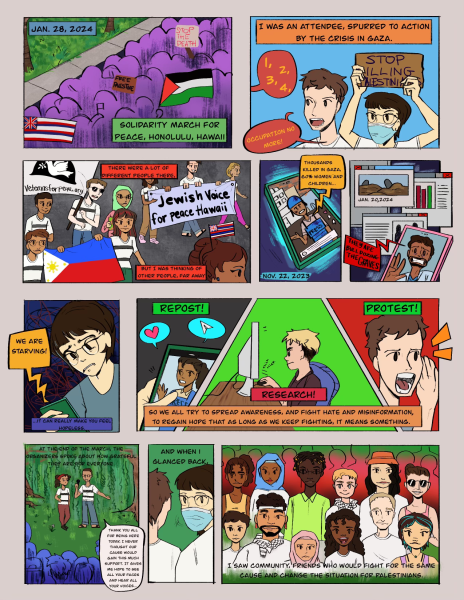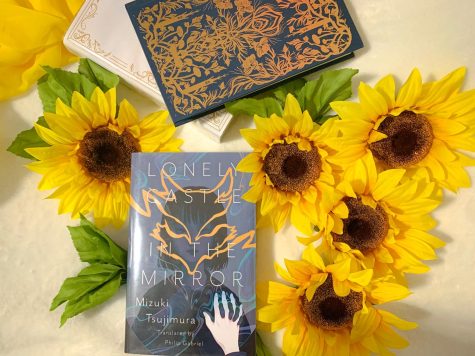Let’s find kind
Links of Thanks hanging in the cafeteria
November 30, 2022
“Have courage and be kind.” These were Cinderella’s mother’s last words to her in the 2015 Disney live-action production. Simple and versatile, the classic story of Cinderella has stood the test of time, with many adaptations over the years. And at its core, her story embodies the beauty in being kind.
Every day she worked hard to take care of her stepmother and stepsisters, even as they constantly mistreated her. She was compassionate to everyone she met, befriending mice and an elderly lady, who was her fairy godmother in disguise. Even at her lowest point, Cinderella never said a bad word against her stepmother and stepsisters, always choosing love over hate. In the end, her goodness is rewarded and she finally lives happily ever after. Cinderella’s story celebrates kindness, showing that love prevails over all.
The dictionary defines kindness as “the quality of being friendly, generous, and considerate.” But like many things, it can hold a different meaning for every person. Most importantly, I believe that kindness goes beyond just being “nice”.
Kindness is putting someone else’s needs above your own, without expecting anything in return. Sometimes, being kind is simple, such as saying “have a good day” or “good job” or even a smile in their direction. But other acts of kindness require a sacrifice from you, whether it be your time, money, or something else.
You’ve probably heard that being kind makes you feel good. In fact, it actually does. Kindness can benefit your physical, emotional, and mental health.
Being kind is good for your heart, literally. Kindness produces oxytocin, commonly known as the “love hormone.” According to Dr. David Hamilton, one of the leading experts in the field of the mind-body connection, “Oxytocin causes the release of a chemical called nitric oxide in blood vessels, which dilates the blood vessels. This reduces blood pressure and therefore oxytocin is known as a ‘cardioprotective’ hormone because it protects the heart (by lowering blood pressure).”
Additionally, being kind can boost serotonin, the “feel good” chemical. It’s the neurotransmitter responsible for feelings of satisfaction and well-being. Most medication for mood disorders, such as anxiety and depression, target ways to increase the serotonin in your brain. In that sense, kindness is a natural antidepressant, improving your mood and making you feel calmer and happier.
Giving generously and serving selflessly can cause a “helper’s high,” which increases your positive emotions. Emory University studies found that your brain’s pleasure and reward centers are activated when you’re kind to someone, leading to the “helpers high.” This concept grew in popularity around the 1980s, and is often associated with better health and an increased lifespan.
Acts of kindness will usually fall under the five love languages. Although the love languages are typically associated with romantic relationships, it can also be used to express kindness toward anyone in everyday situations. Below are five ways to show kindness to others.
- Words of affirmation is saying supportive words of encouragement to someone who needs it. A simple compliment, praise, or encouragement can go a long way. This love language is all about uplifting others with spoken or written words.
- Quality time is giving your undivided attention to someone to show that you care about them. Being good company and an active listener is important, so don’t get distracted by your phone screen.
- Although not as commonplace as the other love languages, physical touch still has an impact in relationships. It’s usually used with people you’re close to. Giving a friend or family member a hug can brighten their day.
- Giving gifts lets the receiver know that you were thinking of them. It’s not necessarily about buying large and extravagant presents. Sometimes, small but meaningful items have the greatest impact. It’s truly the thought that counts.
- Doing something for others to make their life easier is considered acts of service. You go out of your way to lend a helping hand. Examples of this are volunteering or helping your parents with chores.
Now, the only thing left is to put one or more of these into practice. Think about how you can practice kindness in your everyday life. As Cinderella would say, “Have courage and be kind.”
Sources:
https://www.dartmouth.edu/wellness/emotional/rakhealthfacts.pdf
https://www.dartmouth.edu/wellness/emotional/rakhealthfacts.pdf
https://greatergood.berkeley.edu/article/item/the_helpers_high
https://www.mindbodygreen.com/articles/the-5-love-languages-explained
https://www.verywellmind.com/can-the-five-love-languages-help-your-relationship-4783538
https://ideas.ted.com/whats-your-favorite-persons-love-language-heres-how-to-tell-and-how-to-use-it/














